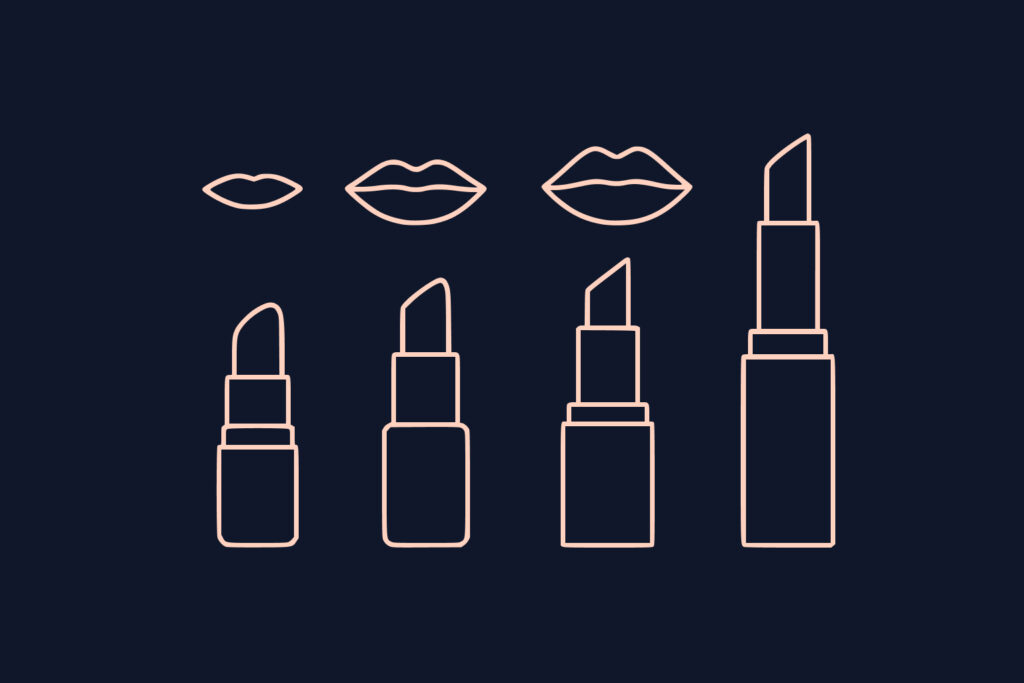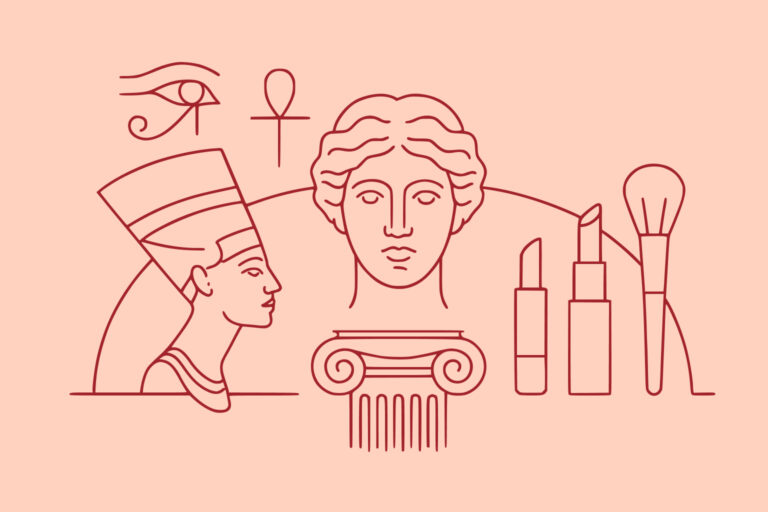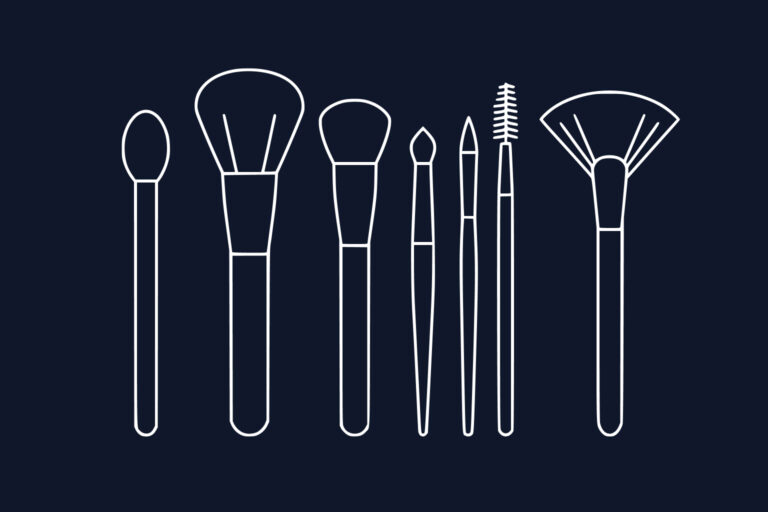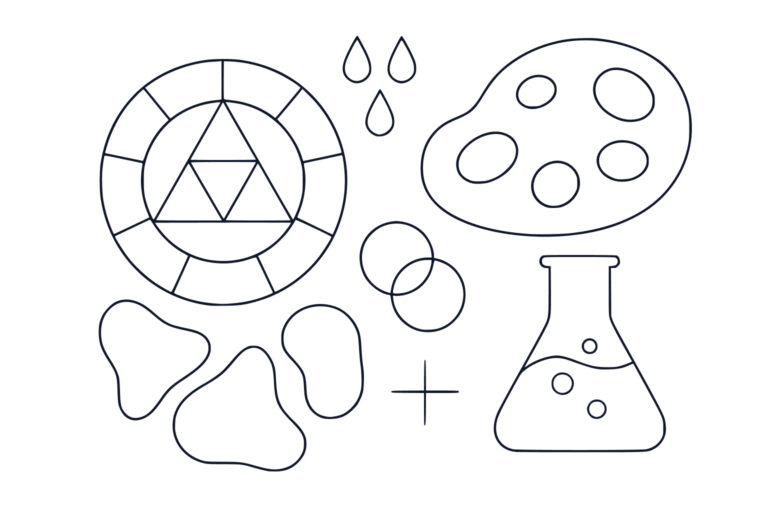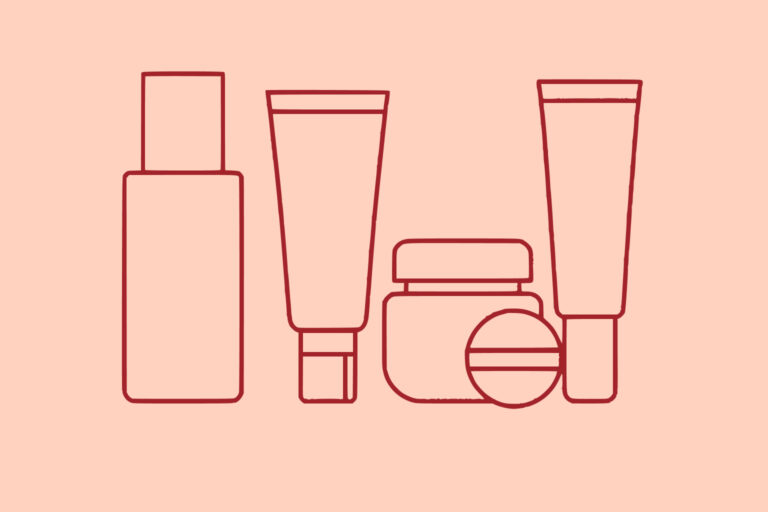The Evolution of Lipstick: From Ancient Rituals to Modern Statement
Published by Professional Makeup Artist London
Few cosmetic products have as rich and varied a history as lipstick. From the crushed gemstones of ancient Sumeria to today’s long-wearing liquid formulas, lip colour has served as a symbol of power, rebellion, femininity, and self-expression across cultures and centuries. This journey through lipstick’s evolution reveals not just changes in formulation and application, but shifts in social attitudes, gender roles, and beauty ideals that continue to influence how we perceive and use lip colour today.
Ancient Origins: The Birth of Lip Colour
The story of lipstick begins approximately 5,000 years ago in ancient Mesopotamia, where both men and women adorned their lips with colour as a symbol of status and spiritual significance. These early pioneers of lip colour understood something that remains true today: the lips are a focal point of the face, and enhancing them can transform one’s entire appearance.
In ancient Sumeria, the world’s first lipstick was created by crushing precious gemstones and semi-precious stones into powder, then mixing them with oils and waxes to create a paste that could be applied to the lips. Lapis lazuli created stunning blue tones, whilst crushed red stones like carnelian and red ochre produced the warm reds that would become synonymous with lip colour throughout history.
The ancient Egyptians elevated lip colour to an art form, developing sophisticated formulations that combined beauty with spiritual significance. Both men and women of all social classes wore lip colour, though the quality and intensity varied according to wealth and status. Egyptian lip colours were made from red ochre mixed with animal fats, beeswax, and sometimes crushed insects like cochineal for deeper red tones.
Queen Cleopatra, perhaps history’s most famous beauty icon, was known for her dramatic lip colour made from crushed carmine beetles and ants. This deep red shade became associated with power and seduction, establishing a connection between red lips and feminine authority that persists in modern beauty culture.
Ancient Chinese civilisations developed their own unique approach to lip colour, initially using it primarily for religious ceremonies before it evolved into a cosmetic practice. Chinese lip colours were often made from beeswax, crushed flower petals, and natural pigments, creating subtle tints that enhanced rather than dramatically altered the natural lip colour.
These ancient practices laid the foundation for our modern understanding of colour theory in makeup, demonstrating how different hues could convey various meanings and enhance facial features in specific ways.
Classical Antiquity: Greek and Roman Innovations
The ancient Greeks and Romans brought new sophistication to lip colour, developing more refined formulations and establishing beauty practices that would influence Western culture for millennia. However, their relationship with cosmetics was complex, reflecting broader social attitudes about artifice, morality, and gender roles.
In ancient Greece, lip colour was primarily associated with prostitutes and actresses, creating a social stigma that would persist in various forms throughout history. Respectable Greek women were expected to maintain natural beauty, though they did use subtle lip stains made from crushed berries and plant dyes for special occasions.
The Greeks developed innovative application techniques, using small brushes made from animal hair to apply lip colour with precision. They also understood the importance of lip preparation, using honey and olive oil to moisturise and smooth the lips before colour application.
Roman women embraced lip colour more openly than their Greek counterparts, developing elaborate beauty routines that included sophisticated lip preparations. Roman lip colours were made from a variety of ingredients including red ochre, cinnabar (mercury sulfide), and crushed rose petals mixed with wine sediment.
The Romans also introduced the concept of lip colour as a status symbol, with different shades and intensities indicating social position. Deep, rich reds were reserved for the wealthy, whilst lighter tints were worn by women of more modest means. This hierarchical approach to lip colour would influence beauty practices for centuries to come.
Roman innovations in cosmetic chemistry led to longer-lasting formulations and more vibrant colours. They developed techniques for fixing pigments that allowed lip colour to withstand eating and drinking, a practical consideration that remains important in modern lipstick formulation.
Medieval Decline and Renaissance Revival
The fall of the Roman Empire and the rise of Christianity brought dramatic changes to cosmetic practices, including a significant decline in lip colour use. The medieval period saw cosmetics, including lip colour, associated with vanity and sin, leading to centuries of suppressed beauty practices.
During the early medieval period, the Christian church actively discouraged the use of cosmetics, viewing them as deceptive and morally corrupting. Lip colour, in particular, was seen as sexually provocative and inappropriate for virtuous women. This religious opposition to cosmetics created a cultural shift that would last for several centuries.
However, lip colour didn’t disappear entirely during the medieval period. It continued to be used by performers, courtesans, and in some cases, by wealthy women in private settings. These underground beauty practices kept cosmetic knowledge alive during a period of official suppression.
The Renaissance brought a dramatic revival of interest in beauty and cosmetics, including sophisticated lip colour formulations. Tudor and Renaissance beauty practices elevated lip colour to new heights of artistry and complexity.
Renaissance lip colours were often made from expensive imported ingredients, including cochineal insects from the New World, which produced vibrant red dyes. These formulations were mixed with beeswax, animal fats, and sometimes precious metals to create luxurious lip preparations that signified wealth and status.
The Renaissance also saw the development of more sophisticated application techniques, with lip colour being used to reshape and redefine the mouth according to fashionable beauty ideals. Women would often cover their natural lip line with foundation and redraw a smaller, more fashionable mouth shape using lip colour.
The 18th and 19th Centuries: Moral Battles and Innovation
The 18th and 19th centuries witnessed ongoing tensions between moral opposition to cosmetics and growing interest in beauty enhancement. This period saw significant innovations in lip colour formulation alongside continued social debates about the appropriateness of makeup use.
During the 18th century, lip colour became increasingly associated with the aristocracy and theatrical performers. The elaborate court culture of Versailles embraced dramatic makeup, including bold lip colours that complemented the period’s artificial beauty ideals. French cosmetic makers developed new formulations using carmine, vermillion, and other pigments to create intense, long-lasting lip colours.
The French Revolution brought a temporary rejection of aristocratic beauty practices, including elaborate lip colour. The new republican ideals favoured natural beauty over artificial enhancement, leading to a period of more subdued cosmetic use.
The Victorian era presented complex attitudes towards lip colour and cosmetics in general. Whilst public morality demanded natural beauty and condemned obvious makeup use, private cosmetic practices flourished among women seeking to enhance their appearance within socially acceptable bounds.
Victorian lip colours were typically subtle and designed to enhance rather than dramatically alter natural lip colour. Popular formulations included lip salves tinted with rose petals, cherry juice, or other natural ingredients that provided gentle colour whilst maintaining the appearance of natural beauty.
The late 19th century saw significant technological advances in cosmetic manufacturing, including the development of new pigments and preservation methods that would revolutionise lip colour formulation. These innovations laid the groundwork for the modern lipstick industry that would emerge in the early 20th century.
Understanding this historical context helps modern makeup artists appreciate how social attitudes and technological advances have shaped contemporary makeup products and their applications.
The 20th Century Revolution: Modern Lipstick is Born
The 20th century brought revolutionary changes to lipstick that transformed it from a niche cosmetic into a mass-market phenomenon. Technological innovations, changing social attitudes, and new manufacturing techniques created the modern lipstick industry we know today.
The early 1900s saw the first commercially manufactured lipsticks in tube form. In 1915, Maurice Levy invented the first metal lipstick tube with a slide mechanism, revolutionising how lip colour was packaged and applied. This innovation made lipstick more portable, hygienic, and convenient to use.
The 1920s marked a turning point in lipstick acceptance and popularity. The flapper movement embraced bold makeup as a symbol of women’s liberation and rebellion against traditional values. Dark, dramatic lip colours became fashionable, with deep reds and even black lipsticks gaining popularity among avant-garde women.
Hollywood’s golden age in the 1930s and 1940s elevated lipstick to iconic status. Movie stars like Greta Garbo, Joan Crawford, and later Marilyn Monroe made specific lip colours and application techniques famous worldwide. The film industry’s influence on beauty standards helped establish red lipstick as the ultimate symbol of glamour and sophistication.
World War II brought both challenges and innovations to the lipstick industry. Rationing of materials led to creative formulations using alternative ingredients, whilst the symbolic importance of lipstick as a morale booster led governments to ensure continued production despite wartime shortages.
The post-war period saw explosive growth in the lipstick market, with new brands, colours, and formulations appearing regularly. The 1950s established many of the classic red shades that remain popular today, whilst the 1960s brought experimentation with pale, nude tones that complemented the era’s mod aesthetic.
The 1970s and 1980s saw continued innovation in lipstick formulation, including the development of long-wearing formulas, frost finishes, and unconventional colours. This period also saw the rise of professional makeup artistry as a recognised field, leading to more sophisticated understanding of lip colour application and makeup techniques.
Cultural Significance and Social Movements
Throughout its evolution, lipstick has served as more than just a cosmetic product—it has been a powerful symbol of social change, rebellion, and identity. Understanding these cultural dimensions helps explain lipstick’s enduring popularity and significance.
The suffragette movement of the early 20th century adopted red lipstick as a symbol of women’s rights and independence. Suffragettes wore bold red lips to rallies and protests, using cosmetics as a form of political statement that challenged traditional gender roles and expectations.
During World War II, lipstick became a symbol of resilience and normalcy. Women on the home front used lipstick to maintain morale and femininity despite wartime hardships. The famous “Victory Red” shade became an iconic symbol of the era, representing both patriotism and feminine strength.
The feminist movements of the 1960s and 1970s had complex relationships with lipstick and cosmetics. Some feminists rejected makeup as a tool of patriarchal oppression, whilst others embraced it as a form of self-expression and empowerment. This debate continues to influence contemporary discussions about makeup and feminism.
Lipstick has also played important roles in LGBTQ+ culture and drag performance, where bold lip colours serve as tools of gender expression and artistic creativity. The drag tradition has significantly influenced mainstream makeup trends and techniques.
Different cultures have developed unique relationships with lip colour, reflecting local beauty ideals, religious beliefs, and social customs. Understanding these cultural variations helps modern makeup artists work sensitively with clients from diverse backgrounds.
Modern Innovations and Future Trends
The 21st century has brought unprecedented innovation to lipstick formulation, application, and marketing. Modern technology has enabled the development of products that would have been impossible to imagine just decades ago.
Long-wearing and transfer-resistant formulas have revolutionised lipstick performance, allowing colours to last through meals, drinks, and extended wear without touch-ups. These innovations use advanced polymer technology and new pigment systems to create durable colour that maintains comfort and appearance.
Liquid lipsticks have gained enormous popularity, offering intense colour payoff and long-wearing performance in a new application format. These products combine the precision of lip liner with the coverage of traditional lipstick, creating new possibilities for lip makeup artistry.
Customisation and personalisation have become major trends, with brands offering custom colour matching, personalised packaging, and bespoke formulations. Technology enables consumers to create unique shades that perfectly complement their skin tone and personal style.
Sustainable and clean beauty movements have influenced lipstick development, leading to formulations with natural ingredients, recyclable packaging, and ethical sourcing practices. These trends reflect growing consumer awareness of environmental and social responsibility.
Digital technology has transformed how lipstick is marketed and sold, with virtual try-on apps, social media influencers, and online tutorials changing how consumers discover and learn about lip products. These digital innovations have democratised beauty knowledge and made professional techniques more accessible.
The future of lipstick promises even more innovation, with smart cosmetics that respond to environmental conditions, biotechnology-derived ingredients, and new application methods that could revolutionise how we think about lip colour.
The Art of Lipstick Application Through the Ages
The techniques for applying lipstick have evolved dramatically throughout history, reflecting changes in beauty ideals, available tools, and cultural attitudes towards makeup artistry.
Ancient application methods were often crude by modern standards, involving fingers, primitive brushes, or direct application from solid preparations. Despite these limitations, ancient cultures developed sophisticated understanding of lip shaping and colour placement that influenced later techniques.
Renaissance and Tudor periods brought precision to lip application, with artists using small brushes and careful techniques to create fashionable lip shapes. The practice of completely redrawing the mouth with cosmetics required considerable skill and artistry.
The development of the modern lipstick tube in the early 20th century revolutionised application techniques, making precise colour placement easier and more hygienic. This innovation democratised lipstick use and made it accessible to a broader range of consumers.
Professional makeup artistry has elevated lipstick application to high art, with techniques for colour mixing, lip contouring, and special effects that create dramatic transformations. Modern artists use a variety of tools including brushes, sponges, and digital technology to achieve precise results.
Contemporary application techniques benefit from understanding both historical methods and modern innovations, combining traditional artistry with cutting-edge products and tools. This synthesis creates opportunities for both classic elegance and avant-garde creativity.
Conclusion
The evolution of lipstick tells a fascinating story of human creativity, cultural change, and the enduring desire for beauty and self-expression. From the crushed gemstones of ancient Sumeria to today’s high-tech formulations, lip colour has served as a constant companion in humanity’s quest for enhancement and transformation.
Understanding this rich history enriches our appreciation of modern lipstick and helps us recognise the cultural forces that continue to shape beauty trends and preferences. The journey from ancient rituals to modern statements reveals how cosmetics serve purposes far beyond mere decoration—they are tools of identity, rebellion, conformity, and art.
As we look towards the future, lipstick continues to evolve, embracing new technologies, sustainable practices, and diverse beauty ideals. The lessons of history remind us that while formulations and techniques may change, the fundamental human desire to enhance and express ourselves through beauty remains constant.
Whether exploring the broader history of cosmetics or mastering contemporary application techniques, understanding lipstick’s evolution provides valuable context for appreciating this most iconic of beauty products. From ancient queens to modern influencers, the power of the perfect lip colour continues to captivate and inspire.
